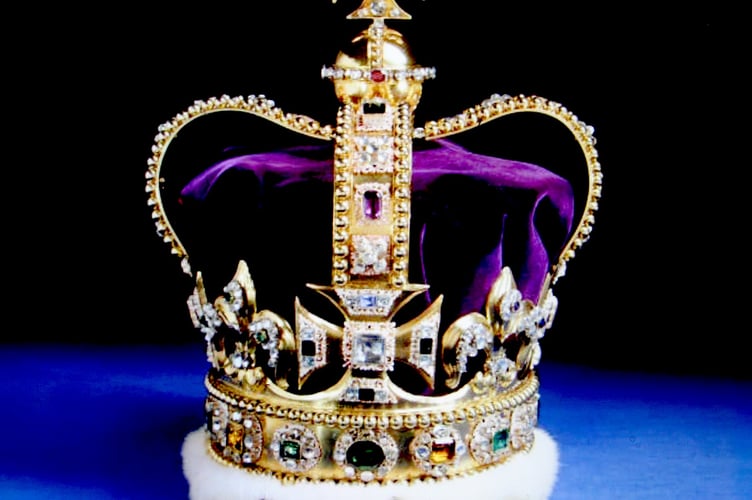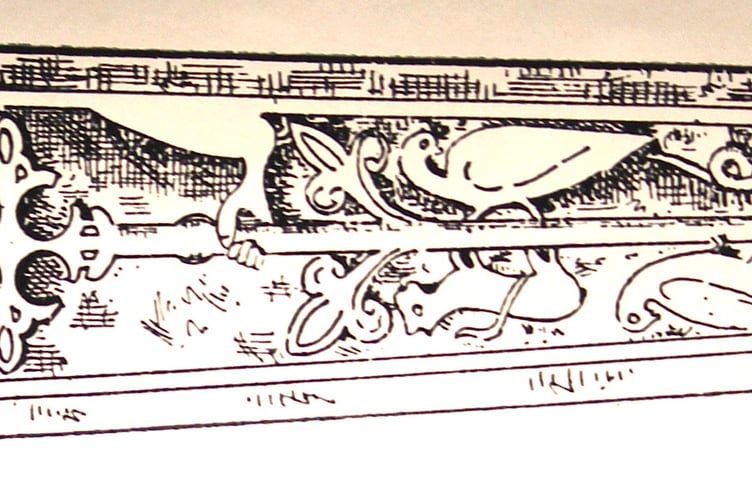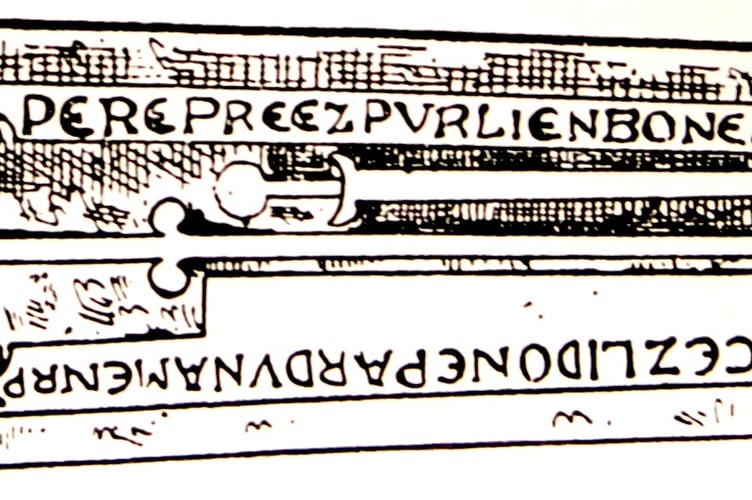Did you know the Crown Jewels were once kept at St Pierre ?
Last month I watched the television coverage of the state opening of Parliament and when the King put on the St Edward Crown I could not help surmising that for some years during the fifteenth century it was kept in a stately home near Chepstow, and I will relate this story shortly.
However, I did some research and discovered that the original 11th century St Edward Crown was kept at Westminster Abbey, King Edward the Confessor’s burial place, until all the regalia were either sold or melted down on the orders of Oliver Cromwell, when Parliament abolished the monarchy in 1649, during the English Civil War. The current St Edward’s crown was made for Charles II in 1661.

It is part of the Coronation regalia and is only used to crown a new king or queen , such as Queen Elizabeth in 1953 and King Charles III in 2023. At the end of the service, the monarch dons the Imperial State Crown.
The manor house of St Pierre, near Chepstow has a special place in the history of our county and takes its name from St Pierre of Caen in Normandy who gave support to William the Conqueror during his invasion of 1066. He provided armed soldiers and as a reward received land in the areas that later became Monmouthshire and Somerset.
A house was built on land near Chepstow, and in 1100 a small private church dedicated to St Peter was erected beside it by this Norman knight who had been ordered by King Henry I to keep peace on this part of the Welsh levels, and the manor and church were strategically placed on an inlet from the river Severn which was then navigable.
Today, this church has the distinction of being the only parish church in Britain set within a golf course. In the chancel lies the tomb of William Benet, a priest who accompanied King Richard I on his crusades and he became rector of the church in 1240. The stone bears a deeply carved and striking design showing a hand holding a floral cross on which are depicted falcons, a lion and a dragon.

Another stone in the church is inscribed, ‘Urien St Pierre, Obit 1295 – Pray devoutly for his soul that Jesus, for his passions sake, may give him pardons for his sins – Amen’. This stone is a coffin lid which bears a carved cross and a sword and was dug up in the churchyard in 1764.

Today, this ancient church, consecrated to St Pierre is now the parish church of Portskewett, with Sudbrook and St Pierre and most of the present building dates from the 11th century. The lancet window in the south wall and the smaller window in the north are of Saxon design.
There is an ancient eight-sided font and a traceried chancel screen, while the stone altar top is Norman and bearing consecration crosses it rests on a Victorian base. During the Commonwealth periods both the Altar top and the Font were concealed in order to preserve them. The Altar top was buried in the chancel while the font was hidden in the churchyard, and the oak chancel screen which dates from about 1547, was removed to the manor house. They were all returned to the church in 1874.
The whole building is of one size with no chancel but divided from the sanctuary by a wooden screen. On the walls are many marble monuments and inscriptions to the Lewis family, the last of the line being a Crimean veteran who died in 1908.
In 1387 the property had passed from Norman hands to Sir David ap Philip, a Welshman whose roots could be traced back to the princes of Deheubarth.
In 1415 when, King Henry V needed to raise funds for his continental wars which involved the siege of Harfleur and the Battle of Agincourt, he resorted to heavy borrowing. So he approached Sir David Lewis of St Pierre, who was either a wealthy man in his own right or as Governor of Calais he was able to collect large sums of money in taxes from the local citizens.
Being an astute business man, Sir David demanded the Crown Jewels of England as security. It was certainly a wise precaution for Henry V died in 1422 and it was not until 1437 that his son Henry VI redeemed the Crown Jewels when they were returned to the Tower of London.
On the first floor of this stately home is a small recess in the thick wall, where a tradition claims that the crown jewels of Henry V (Harry of Monmouth) were stored and kept here for more than twenty years.
This is the only time that the jewels have been out of the possession of the Crown and details of the transaction were found in 1828 by Dr George Ormerod, a Cheshire historian. The original document has been lost but a copy still exists.
Sir David ap Philip’s great grandson adopted the name Lewis and the ancient title of William ap Thomas ap Lewis de St Pierre, which was modified to William Lewis of St Pierre. It was this William Lewis, who in 1475 began building the manor house and tower that stands on this site today. It was completed by his son George, then, 250 years later, Morgan Lewis carried out extensive alterations. The last of the Lewis family to live here were Charles and Sarah who left in 1893, when the property was sold to Daniel Lysaght who was responsible for creating the very fine gardens.
In 1960 the house was bought by William Graham, a hotelier who lived at Tintern in the Wye Valley and major extensions were added to the building. A few years later, he opened a golf course at an annual subscription of £15 for members. Today, the property is known as the St Pierre Marriot Hotel and Country Club and it is surrounded by 400 acres of parkland.
St Pierre Manor was established in this location because of its easy access from the River Severn. One mile to the south is an ancient harbour which is referred to in a ninth-century source as Porth-is-coed, a name later used for the nearby village of Portskewett. The harbour originally covered a much larger area and was very important during post-Roman times. However, it later became silted up and today is merely an anchorage for small boats on the Severn Estuary owned by members of the Chepstow and District Yacht Club.
.jpg?width=752&height=500&crop=752:500)


